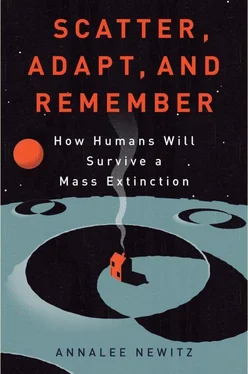In the century and a half since people began to perceive the political underpinnings of famines, it has become commonplace to view them as caused primarily by economic problems. The Nobel Prize–winning economist Amartya Sen first advanced this theory in the 1980s, in his highly influential book Poverty and Famines: An Essay on Entitlement and Deprivation . There, Sen lays out the details of his famous theory. He explains that “entitlements” are avenues by which people acquire food, and famine is always the result of how those entitlements work in a particular society. Direct entitlements refer to subsistence methods of getting food, like growing potatoes. Indirect entitlements are avenues that allow people to get food from others, usually by earning money and buying it. Transfer entitlements are ways that people get food when they have neither direct nor indirect means—generally, from famine-relief groups. Sen’s theory has allowed economists to diagnose the causes of famines by looking at the causes of “entitlement failures.” In the case of Black ’47, most Irish people suffered all three forms of entitlement failure.
But there is a missing piece in Sen’s theory of entitlements, and it’s one that is only going to become more important as we move into the next century. That piece is the environment. Evan Fraser, a geographer at the University of Guelph, in Ontario, researches food security and land use. He argues that the Irish Potato Famine reveals how poor environmental management can lead to mass death. He believes we should supplement Sen’s theory of entitlements with an understanding of how “ecological systems are vulnerable to disruption.” In other words, famines are undeniably the result of how we use (or abuse) our environments to extract food from them.
Many famines begin when economic or political circumstances encourage people to convert environments into what Fraser calls “specialized landscapes,” good for nothing but growing a limited set of crops. In Ireland, for example, landlords pushed farmers to transform diverse regions into landscapes that could yield only one crop: the potato. Often, this kind of farming appears to work brilliantly in the short term. Black ’47 was preceded by years of escalating productivity as Irish farmers converted grain crops to potatoes. Paradoxically, the wealth of the ecosystem meant that it was also precarious. Any change to these “specialized landscapes,” whether a blight or a slight change in temperature or rainfall, can wipe out not just one farm but every single farm . What’s bad for one potato farm is bad for all of them. As Fraser put it, “You get one bad year, and you’re stuffed.” In the case of the Irish famine, there were at least two bad years of blight before true famine set in, during 1847.
The ecosystem vulnerabilities leading to Black ’47 could very well become common over the next century. Seemingly minor problems like temperature and rainfall changes could spell death for regions that depend on a single crop that is sensitive to such changes. The most immediate areas of concern lie in the breadbaskets of the American Midwest, a vast region of prairies that stretches from Saskatchewan to Texas. “Most societies are interested in grain, and if you think in terms of wheat, then you need a hundred and ten days of growing conditions,” Fraser said. “You need weather that’s not too hot and not too cold, and abundant but not excessive rainfall. If you get long periods of good weather, you don’t realize there could be a problem. And then you get one bad year, and it all unravels very quickly.”
During the dust-bowl famines of the 1930s, farmers saw a collapse of the Midwest ecosystem. And we’re going to see a return to the dust bowl again. “We know from climate records that the Midwest experiences two-hundred- to three-hundred-year droughts. There are periods where we see centuries of below-average precipitation. The twentieth century was above average. We’ve had a long rhythm of good weather. But the next hundred years will be much drier. We’ve already seen droughts hitting in Texas. It’s going to be hard to maintain productivity then.” I spoke to Fraser in early 2012, before the worst drought in over 50 years hit the Midwest that summer, destroying crops and livelihoods. According to the weekly U.S. Drought Monitor that year, “About 62.3 percent of the contiguous U.S. (about 52.6 percent of the U.S. including Alaska, Hawaii, and Puerto Rico) was classified as experiencing moderate to exceptional drought at the end of August.” Fraser’s predictions for drought are already coming to pass, and he and his colleagues believe more is yet to come.
Does this mean we are witnessing the leading edge of a global famine? Yes and no. The issue here isn’t that people are inevitably victims of their environment, nor that mild changes in the weather always lead to famine. Trouble comes when you see a growing group of people who are extremely poor, combined with a vulnerable ecosystem that’s not diverse and therefore can’t withstand any kind of climate change or pests. A failed crop is a tragedy, but it doesn’t become a famine unless people don’t have the money to buy food elsewhere.
In Black ’47, the main way that people survived the famine was a method that spoke to both problems. They emigrated, moving themselves and their families away from a failing economy and a failing ecosystem. But during many famines, people don’t have that option.
There were many famines during the mid-twentieth century, and most of them were related to war. A lot of these deaths were probably from diseases exacerbated by conflict and malnutrition. War rationing and deprivation leave people weakened, vulnerable to dysentery and epidemic disease. But in the early 2000s, Newcastle University historian and demographer Violetta Hionidou found evidence of a terrifying period during the Axis occupation of Greece from 1941 to 1944, when 5 percent of the population died directly from want of food.
The Greek Army staged a highly successful resistance to Italian invasion in 1940, and the Greek premier refused to buckle under to Mussolini even after a protracted battle. Indeed, had it not been for the aid that Bulgaria and Germany gave to the Italians, it’s likely that Greece would have held fast. Instead, after intense German bombing, Greece fell and was occupied by troops from Italy, Bulgaria, and Germany—all of whom were taking orders from Nazi commanders in Germany, and securing the public’s docility through a Greek puppet government in Athens. In the wake of the occupation, England withdrew its support (the British had been aiding the Greek military) and set up a blockade to prevent supplies from reaching the country. Carved up into territories occupied by three different hostile nations, and cut off from its former allies, Greece was fragmented and intensely vulnerable.
That fragmentation—political, economic, and, in the case of the famine-stricken islands Syros, Mykonos, and Chios, geographical—is what led to the horrors that came next. A first wave of famine struck Athens, claiming as many as 300,000 lives after the German occupying forces requisitioned food and demanded that the Greek government pay the costs of the occupation. In one fell swoop, the people of Athens had lost what Sen would call direct and indirect entitlements, and the blockade prevented transfer entitlements from easing their suffering. Often, that is where the story of the Great Famine of Greece is said to end, with a few nods made to the fact that there were also poor harvests. But according to Hionidou, there was much more to the story than that.
First of all, the production levels from Greek farming did not actually dip below the norm. She found that the numbers historians have used to make this claim are entirely based on products that the occupying government collected tax on. But there was widespread resistance to paying tax, as well as the simple fact that people couldn’t afford it. Therefore a lot of foodstuffs that Greece produced during the famine went untaxed and unrecorded. Still, Greek citizens relied for much of their food on imports and trade; remote island areas were especially dependent on imports. The occupying forces restricted people’s movements to small areas, which meant that nearly the entire Greek population had to sneak around and participate in a black market for food. Of course, as Hionidou pointed out, “Those who couldn’t afford the black market died.”
Читать дальше






![Аннали Ньюиц - Автономность [litres]](/books/424681/annali-nyuic-avtonomnost-litres-thumb.webp)





